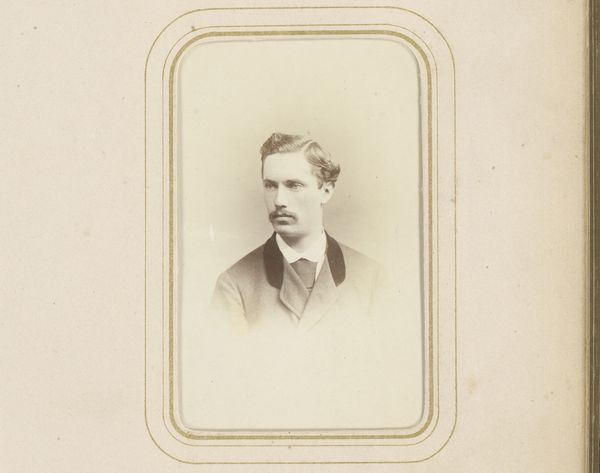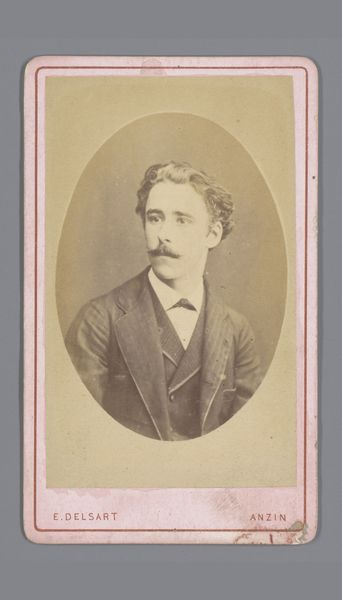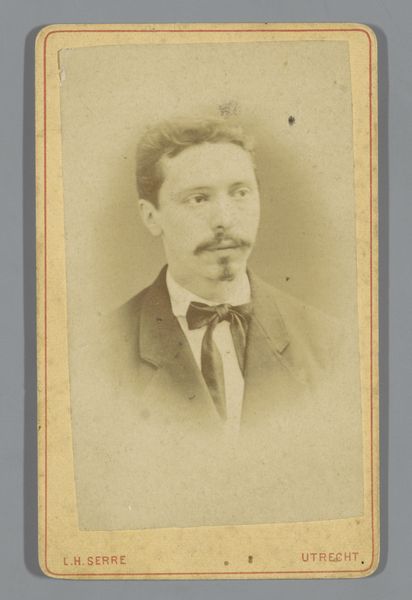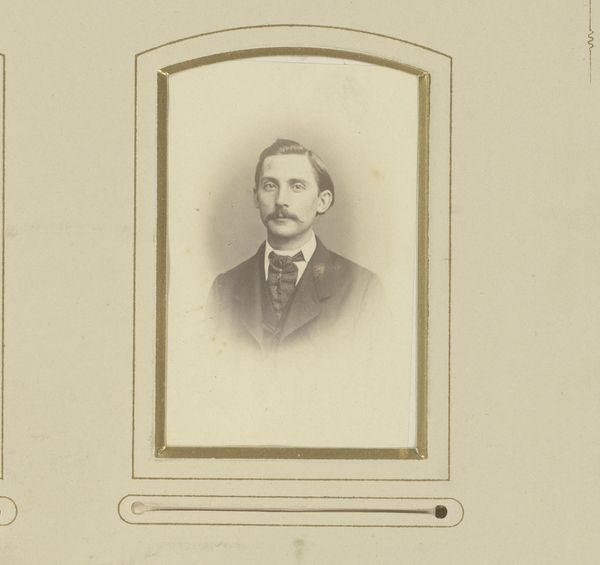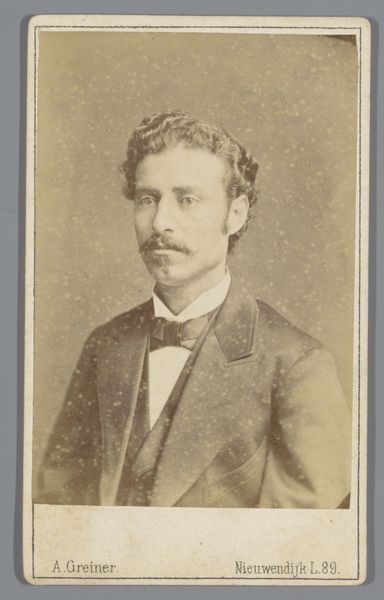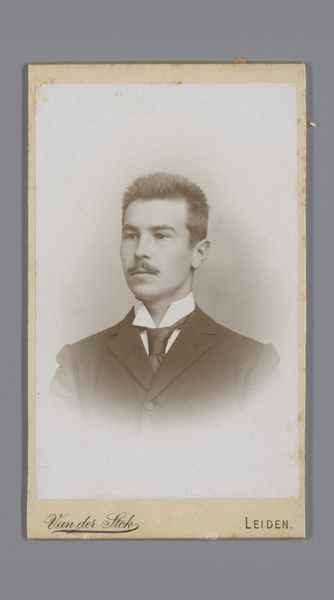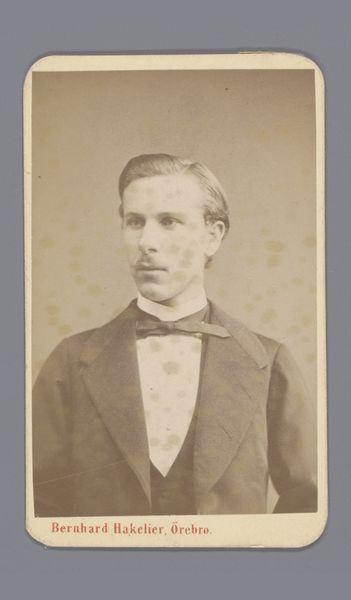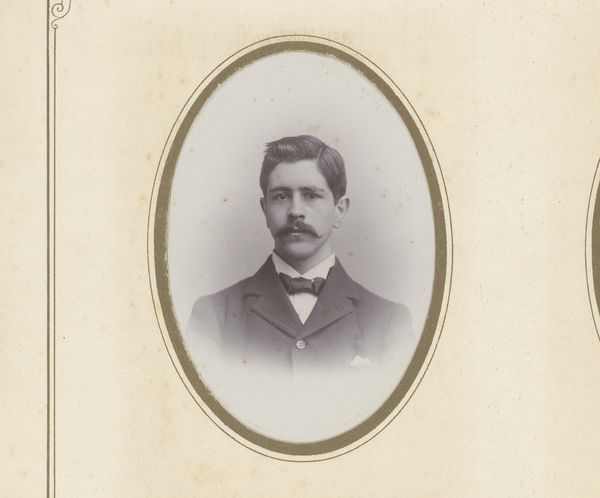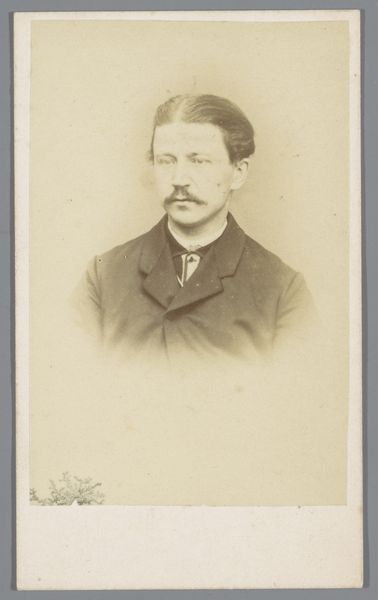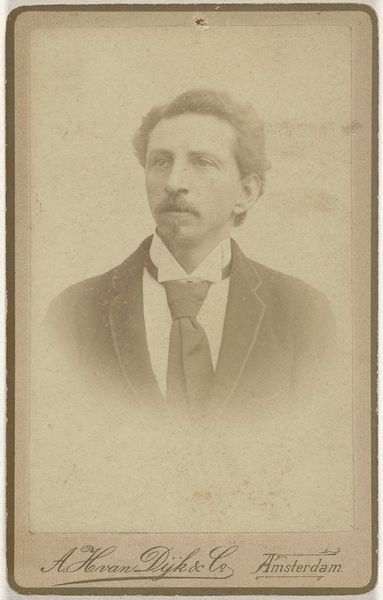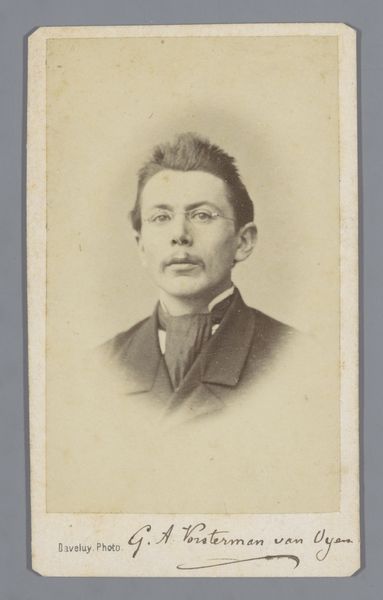
photography
#
portrait
#
photography
#
realism
Dimensions: height 105 mm, width 60 mm
Copyright: Rijks Museum: Open Domain
Editor: So here we have "Portrait of an Unknown Man" from around 1870, a photograph by Andries Jager. It’s strikingly simple. I’m curious to hear your insights. What stands out to you? Curator: Well, let's consider the materiality. Photography in the 1870s wasn't as simple as point and shoot. The process, the glass plate negatives, the chemical baths—all contribute to the final image and, critically, determined the conditions for both the photographer and the sitter in the studio. What labor went into creating this object? Editor: That's fascinating! I hadn’t considered the labor involved. So, how would that impact our understanding of the subject? Curator: Think about the pose, the deliberate stillness. In an era where photography demanded extended exposure times, it dictated a certain decorum and stoicism. His clothing—that formal suit and tie. These sartorial choices aren’t just personal; they speak to societal expectations, class aspirations, and the emerging visual language of bourgeois identity. It's all about the performance and presentation of self in a rapidly changing social landscape. Editor: So, the photograph becomes a record of more than just a face, but also of social conditions and evolving material processes? Curator: Exactly. And consider its function: as a commodity, an object of trade, an increasingly common medium through which class distinctions and desires were both reinforced and contested. These photographs would have circulated. Editor: That shifts my perspective. It's not just a portrait; it's a product of its time, embedded in a network of labor and consumption. Thanks for illuminating that for me! Curator: Precisely. Paying attention to these details shows us the layers of meaning and socio-economic forces inherent in even the simplest-seeming artworks.
Comments
No comments
Be the first to comment and join the conversation on the ultimate creative platform.
